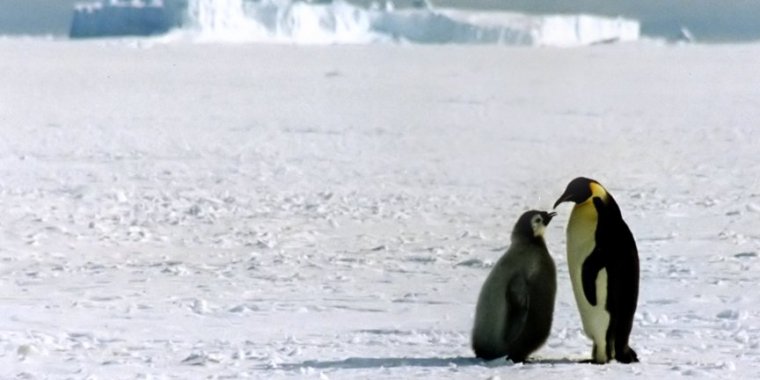| News / World News |
Deal Reached to Create World's Largest Marine Reserve in Antarctica
A historic deal has been reached to create the world's largest marine reserve in Antarctica, after years of diplomatic wrangling.

Emperor, Aptenodytes forsteri chick with parent in Ross Sea. ![]()
The pact for the protected area in the Ross Sea covers more than 1.55 million square kilometers, about the size of Britain, Germany and France combined.
There will be a no fishing zone of 1.12 million square kilometers.
The Ross Sea - home to penguins, seals, Antarctic toothfish, whales and huge numbers of krill - a staple food for many species - is one of the last intact marine ecosystems in the world. (VOA News)
OCTOBER 29, 2016
YOU MAY ALSO LIKE

Remains of microorganisms at least 3,770 million years old have been discovered, providing direct evidence of one of the oldest life forms on Earth.

The Sahara Desert has expanded by about 10 percent since 1920, according to a new study by National Science Foundation (NSF)-funded scientists at the University of Maryland (UMD).

Brazil is going to support the creation of a whale sanctuary in the South Atlantic to protect cetaceans from hunting and ensure their survival. Environment Minister Sarney Filho will uphold that when the International Whaling Commission votes on the issue on 24 October in Slovenia.

Illegal occupation of land, deforestation, and monitoring efforts were some of the problems detected during the three years of research by the Joaquim Nabuco Foundation in 14 of the country's Federal Conservation Units of Total Protection, located in the caatinga—a biome often referred to as the Brazilian savanna.

Brazilian cities in coastal areas are more vulnerable to climate change, especially to the sea level rise, but also to such events as heavy rain, storms, floods, and coastal erosion, all of which cause destruction and adversely affect infrastructure in these municipalities.
The bones and teeth of two--possibly related--Ice-Age infants, who were buried more than 11,000 years ago in central Alaska, constitute the youngest human remains ever found in the North American Arctic.